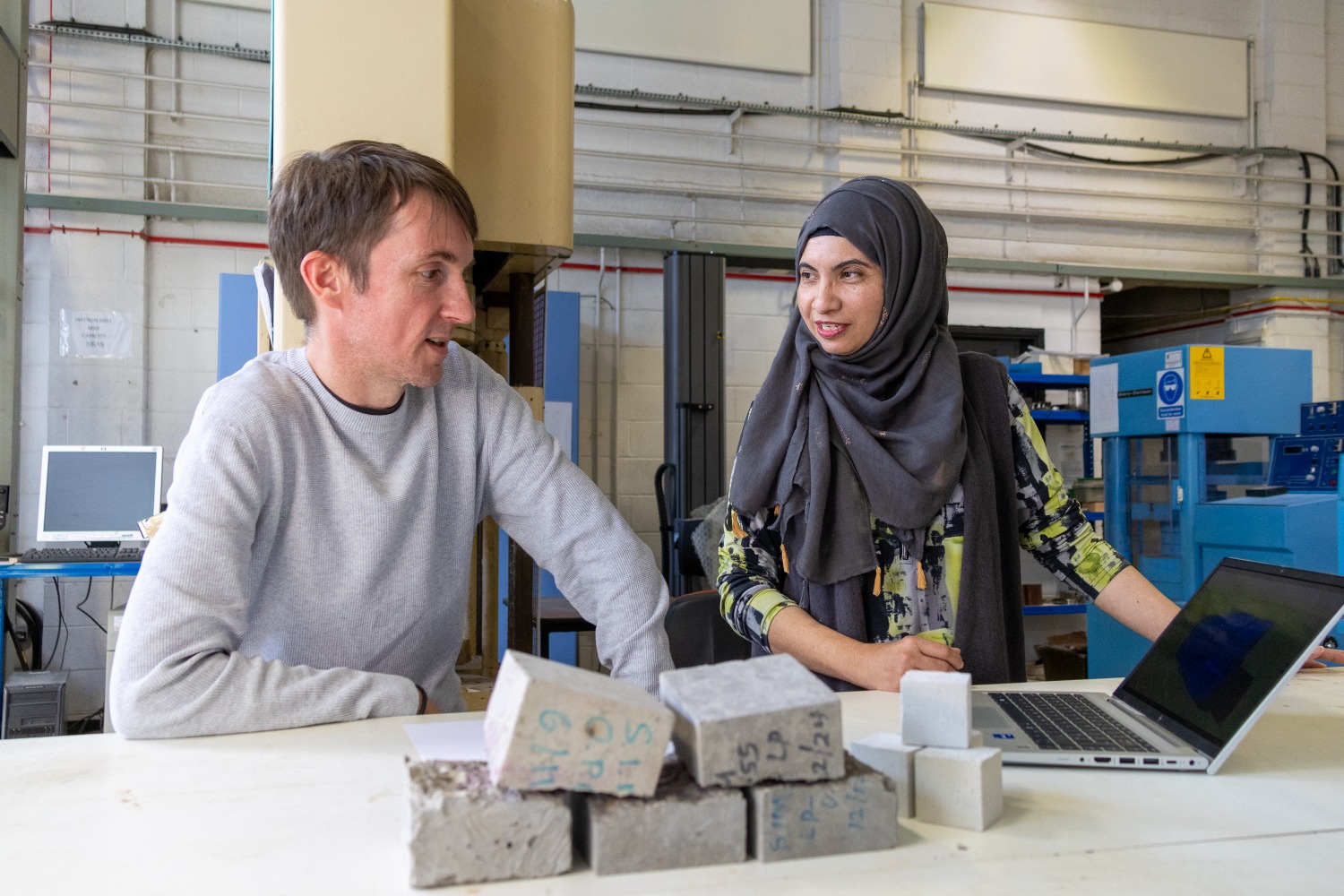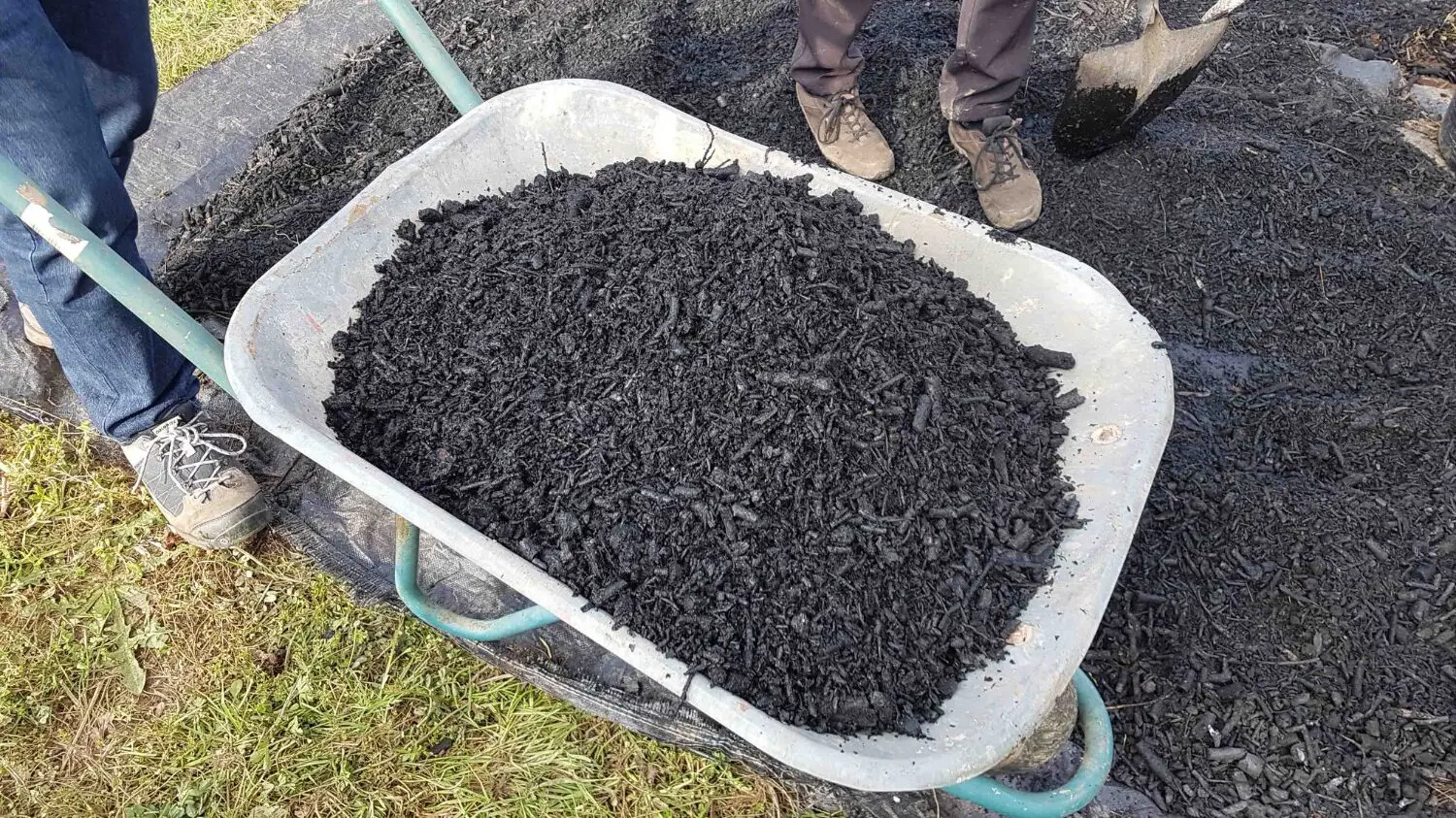
THE Scottish construction sector is set to play a key-role in a two-year study exploring the possibility of utilising biochar as a building material to help the sector globally meet pressing environmental targets.
Biochar is a charcoal-like substance typically used as a soil enhancer and is produced by heating organic biomass from food, paper, agricultural, and forestry waste in the presence of little or no oxygen, with the process known as pyrolysis.

Small-scale studies have seen biochar used as an additive with a ratio up to 80% in concrete, bricks, plaster, and insulation, with it proving to provide excellent insulation and the ability to regulate humidity thanks to its water absorption qualities.
Crucially, biochar is also carbon negative – it locks in carbon from the organic materials that would have otherwise decomposed and omitted carbon dioxide into the atmosphere, had they not been turned into biochar. With the global construction sector accounting for nearly 40% of all energy-related carbon emissions, the ability to utilise such a material could prove crucial.
Despite its potential, no such data exists on biochar performance within an actual building. That’s why Heriot-Watt University is spearheading an interdisciplinary study, funded by UK Research and Innovation (UKRI), which will delve into both the performance and safety of the material in simulated built settings.
Led by Dr Mehreen Gul, assistant professor in architectural engineering at the institution , the team includes experts in civil engineering, building physics, and social science from Heriot-Watt, Aston University and the University of Birmingham, as well as key stakeholders in the construction sector – with Built Environment – Smarter Transformation (BE-ST) Carbonfuture (Freiburg) already onboard.
“Biochar can be created in different ways depending on the feedstock, and the quality of the biochar can also vary on what temperature it is subjected to – so it is produced with different properties,” Dr Gul explained. “The idea is that we will use different types of biochar and understand their properties and then we will look to do building simulation. We will investigate different applications of biochar for different building types such as a house or office building to see what sort of impact it exerts in terms of carbon and energy metrics.”
Input from the construction sector will be key, with Dr Gul explaining the interdisciplinary team will not move from one stage to another in the project without considering the thoughts of those within the construction supply chain, developers, suppliers, and material manufacturers.
“It is not a case of us creating the solution; we will co-create it with the industry as a joint effort,” she continued, before revealing that consultation is already underway with sector stakeholders ahead of an industry event in the new year which will see the project team gauge the sector’s preferences, concerns, and what sort of features they want to see in a biochar product.
The information will be used to create the necessary materials, with results such as compression strength and thermal conductivity being fed back to the sector. At the same time, the samples will be modelled using computer simulations of specific building types to determine how different compositions of biochar reacts in different settings.
“The main concern is the root to commercialisation – how the product is going to get to the market,” Dr Gul added. “Not a lot of people know about biochar – so for this to make an impact, if the potential is that it’s going to be a carbon negative material and it’s going to make a huge difference, then how do we get that product certified?”
Industry responses will be used to create a final framework that contains all the indicators that lead to the conclusion of the optimal biochar makeup of each building material. Workshops will also help identify routes to certification, with Scottish Forestry already backing the initiative.
Asked why biochar hasn’t been used in construction before, Dr Gul explained that it simply comes down to a lack of knowledge about it. She first came across the prospect of using it as a building material whilst researching biomass which naturally led onto the topic of biochar.
Immediately identifying it as a ‘fantastic’ material, Dr Gul explained potential issues could depend on whether pyrolysis plants can be located close enough to available stock to produce biochar in sufficient quantities. However, these are merely unknown questions rather than sticking points, with Sweden being able to produce enough biochar to use it to heat homes in Stockholm.











